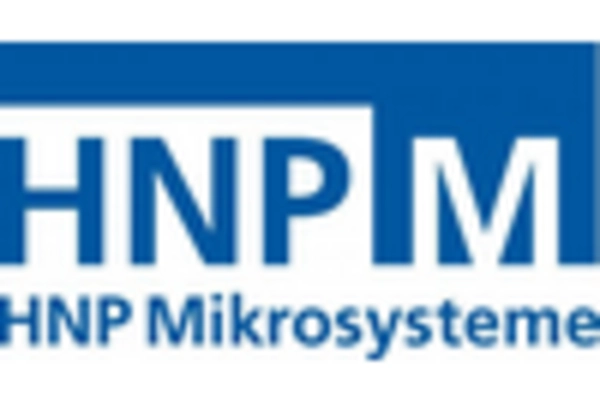Rising Demand in Agriculture
The micro pump market in South America is experiencing a notable surge in demand, particularly within the agricultural sector. As farmers increasingly adopt precision irrigation techniques, the need for efficient water management systems becomes paramount. Micro pumps facilitate the targeted delivery of water and nutrients, optimizing crop yields and resource utilization. In 2025, the agricultural segment is projected to account for approximately 35% of the overall micro pump market. This trend is driven by the necessity to enhance productivity while minimizing water wastage, aligning with sustainable farming practices. Furthermore, government initiatives aimed at promoting modern agricultural technologies are likely to bolster the adoption of micro pumps, thereby contributing to the growth of the micro pump market in the region.
Increased Focus on Water Management
In South America, the growing concern over water scarcity is propelling the micro pump market forward. Governments and organizations are prioritizing efficient water management strategies to address the challenges posed by climate change and population growth. Micro pumps play a crucial role in these strategies by enabling efficient irrigation systems and wastewater treatment processes. The market is expected to witness a growth rate of 7% annually as municipalities and industries invest in technologies that promote sustainable water use. This focus on water conservation not only enhances the micro pump market but also aligns with broader environmental goals, fostering a culture of sustainability across the region.
Emergence of Smart Home Technologies
The rise of smart home technologies in South America is creating new opportunities for the micro pump market. As consumers increasingly seek automation and convenience in their homes, micro pumps are being integrated into various applications, including smart irrigation systems and automated water features. This trend is expected to drive market growth, with projections indicating a potential increase of 10% in demand for micro pumps in residential applications by 2026. The ability to remotely control and monitor water usage aligns with the growing consumer preference for energy-efficient solutions. Consequently, the micro pump market is likely to benefit from the convergence of technology and consumer demand for smart home innovations.
Expansion of Pharmaceutical Manufacturing
The pharmaceutical industry in South America is undergoing significant expansion, which is positively impacting the micro pump market. As pharmaceutical companies increasingly focus on developing advanced drug delivery systems, the demand for micro pumps is expected to rise. These pumps are essential for precise dosing and controlled release of medications, enhancing patient compliance and treatment efficacy. In 2025, the pharmaceutical sector is anticipated to represent around 25% of the micro pump market. The growing emphasis on biopharmaceuticals and personalized medicine further underscores the need for innovative pumping solutions. Consequently, the micro pump market is likely to benefit from increased investments in pharmaceutical manufacturing capabilities across South America.
Technological Integration in Industrial Processes
The integration of advanced technologies in industrial processes is driving the micro pump market in South America. Industries such as chemicals, food and beverage, and electronics are increasingly adopting micro pumps for their ability to handle precise fluid transfer and dosing applications. The market is projected to grow at a CAGR of 8% from 2025 to 2030, reflecting the rising need for automation and efficiency in production lines. Micro pumps offer advantages such as reduced energy consumption and enhanced operational reliability, making them attractive to manufacturers. As industries continue to modernize their operations, the micro pump market is poised for substantial growth, fueled by the demand for innovative fluid management solutions.


















Leave a Comment